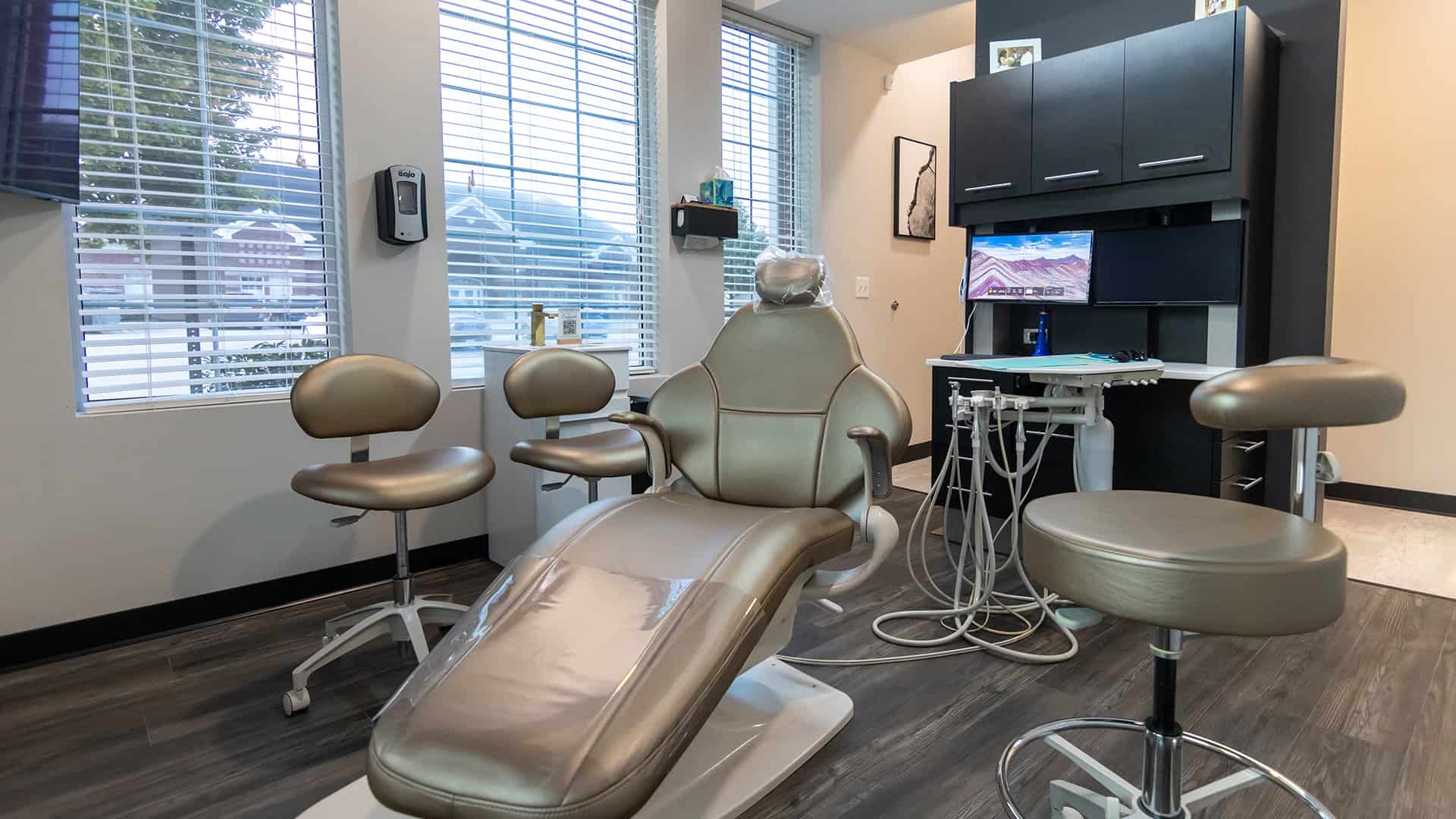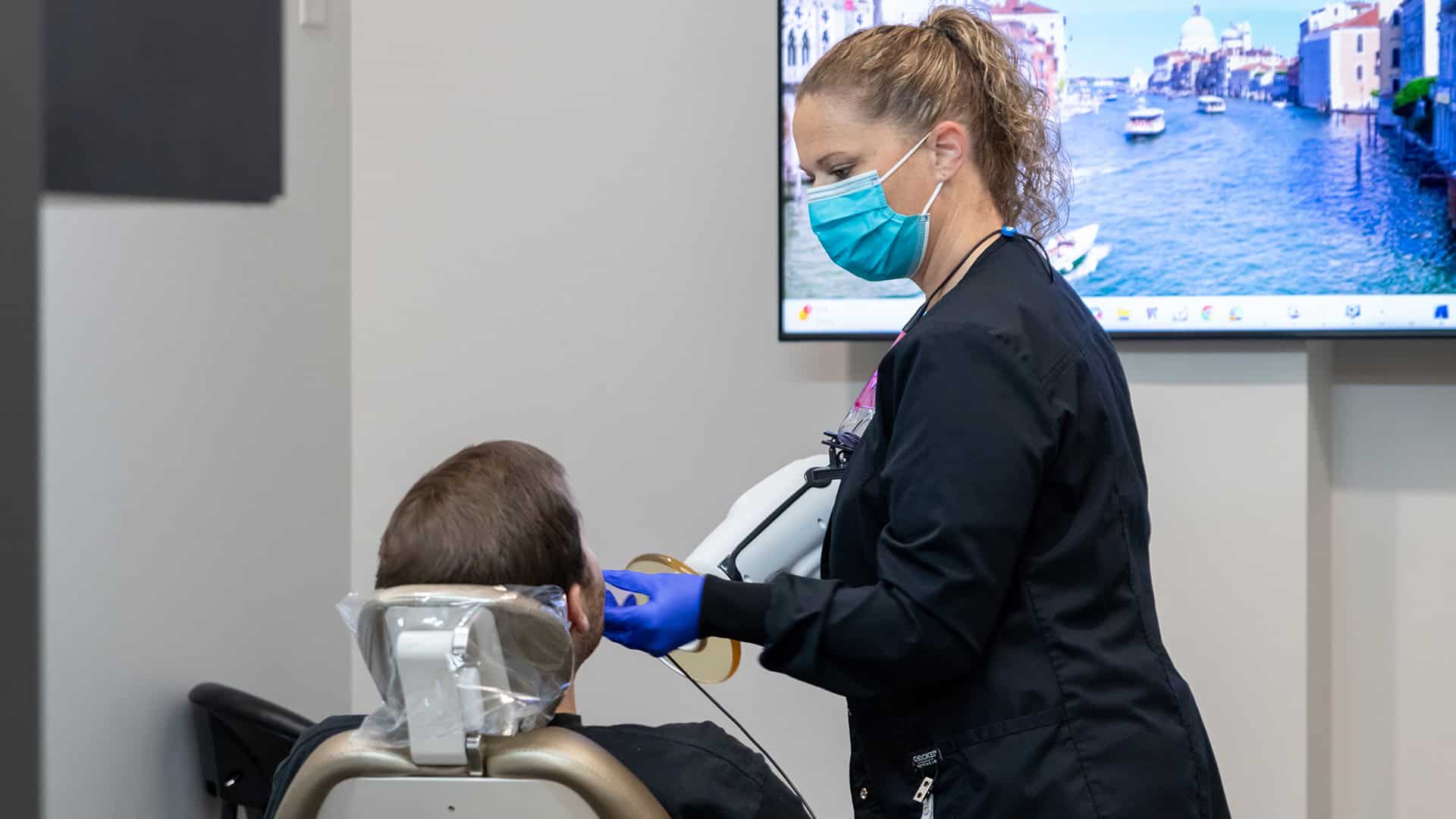Sedation & Oral Surgery
We offer a range of specialty services right here in our office. This includes Oral and Maxillofacial procedures such as tooth extraction, implant placement, bone grafting, and wisdom tooth extraction.

IV vs. Traditional Sedation
Understanding the difference between IV and traditional sedation is crucial for patients, as this knowledge empowers them to make well-informed decisions regarding their health and safety.
IV Sedation: Delivered directly into the bloodstream, IV sedation offers rapid onset and precise control over sedation levels, which makes it highly effective for more intensive or lengthy procedures.
Nitrous Oxide (Laughing Gas): Inhaled through a mask, nitrous oxide provides light sedation and wears off quickly. It’s a convenient option for patients with mild anxiety but doesn’t offer the deeper relaxation provided by IV sedation.
Oral Sedation: Often administered as a pill, oral sedation is generally lighter and takes longer to take effect. It’s suitable for less invasive procedures and shorter appointments.
At Washington Smiles, we’ll discuss your sedation options and help you choose the method that best suits your comfort level and procedure requirements.

What’s in the IV?
The medications used vary based on your distinct health profile and procedure. Still, our experienced team will discuss them with you beforehand to ensure you feel informed and at ease. This sedation involves a carefully controlled blend of medications tailored to meet individual needs, such as:
Sedatives: Medications like midazolam, meperidine, or propofol help relax the body and mind, reducing stress and worry.
Analgesics: These pain relievers guarantee you will experience no discomfort during your procedure.
Anti-nausea Medications: To prevent nausea after surgery and improve your comfort during recovery.
The combination of these medications helps to alleviate anxiety, induce relaxation, and ensure a pain-free experience during dental procedures. We prioritize your comfort and safety, monitoring the sedation process to ensure optimal results.

Benefits of IV Sedation for Patients
Utilized for complex or lengthy procedures, IV sedation provides essential benefits for individuals preparing for oral surgery, enhancing the overall experience and ensuring greater comfort.
Flexible Dosing: Because it's administered intravenously, your dentist regulates the level of sedation, adjusting it as needed to ensure comfort without prolonging recovery.
Faster Acting: Unlike oral sedatives, which take time to activate, IV sedation works almost instantly.
Instantaneous Peace: IV sedation induces a deep state of relaxation, reducing anxiety and allowing patients to feel more at ease.
Shorter Rally: IV sedation often allows faster recovery than general anesthesia.
Limited Memory of Procedure: Many patients report little to no recollection of their procedure, helping to reduce anxiety in future appointments.
Overall, IV sedation not only aids in creating a tranquil environment but also contributes to a more efficient and less traumatic procedure for patients.
Contact Us
Complete the form below for a consultation. A team member will contact you as soon as possible upon receiving it.







